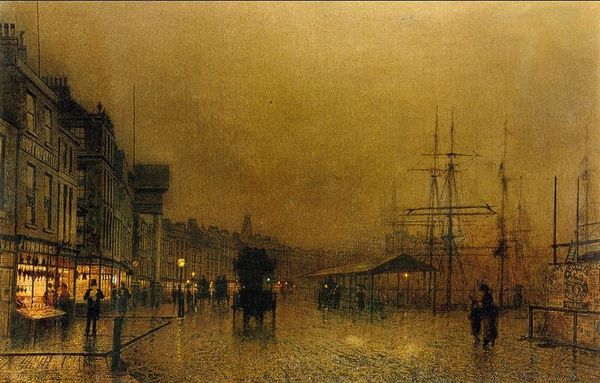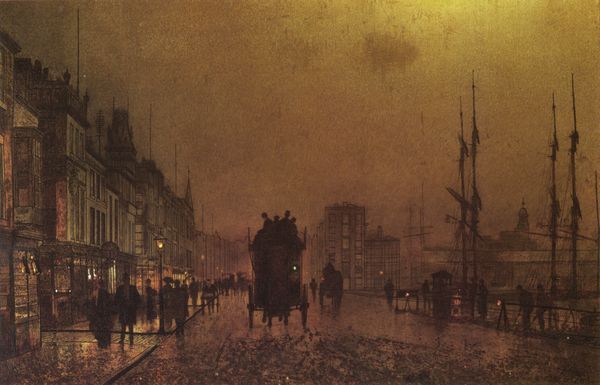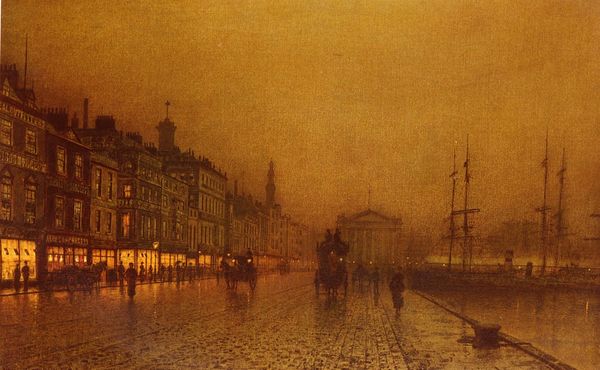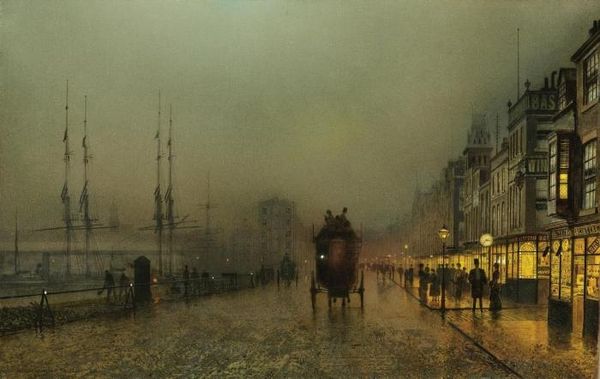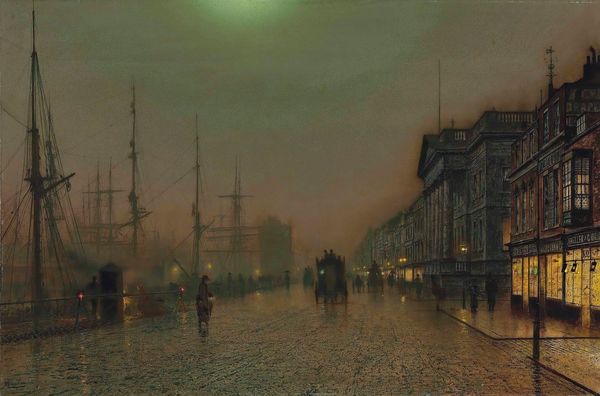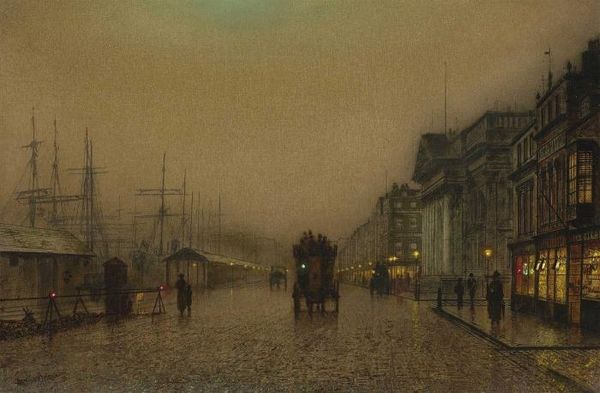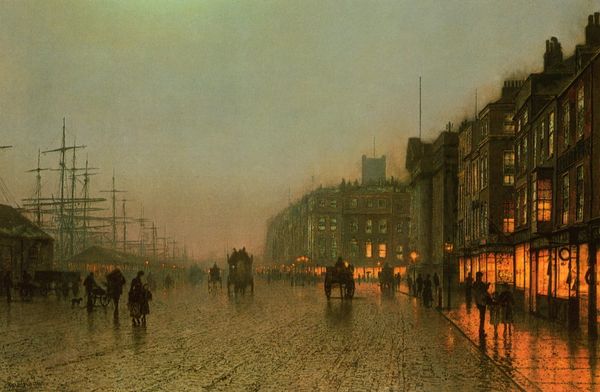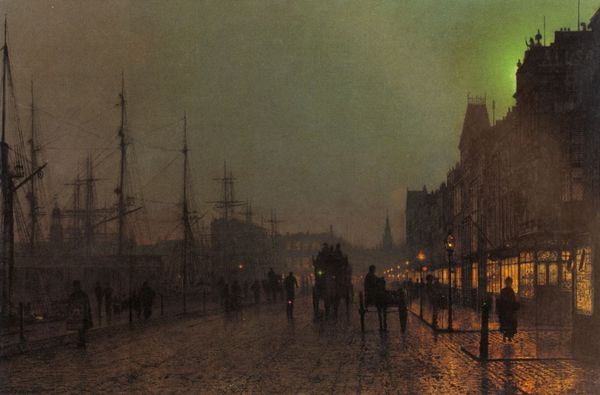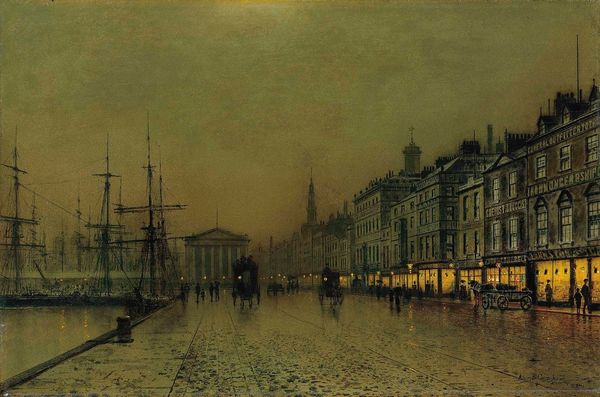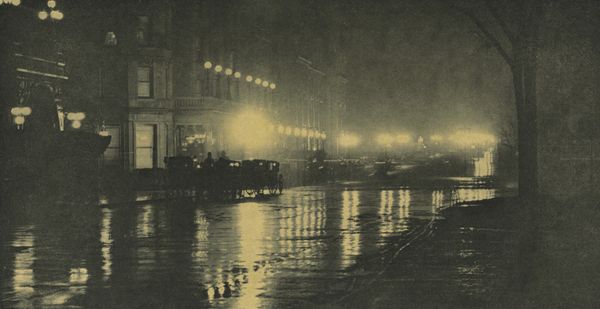
painting, oil-paint
#
night
#
tree
#
sky
#
urban landscape
#
painting
#
oil-paint
#
vehicle
#
landscape
#
urban cityscape
#
road
#
romanticism
#
cityscape
#
street
#
realism
Copyright: Public domain
Curator: This evocative work is titled "Liverpool Customs House" by John Atkinson Grimshaw. Although the specific year remains unknown, it certainly embodies the artist's signature nocturnal style, achieved here through oil paint. Editor: My first impression is of a stage set. The figures are almost silhouettes, caught in a very particular dramatic lighting, with such strong contrasts. It is definitely evoking mystery and solitude. Curator: The lamplit streets, the reflections on the wet cobblestones—Grimshaw certainly knew how to capture the atmosphere of a Victorian city at night. I find myself drawn to how he uses light to almost romanticize an industrial landscape. Editor: Precisely. The choice to emphasize the Customs House is quite pointed. In that era, these structures weren't neutral; they represented the vast, often brutal, machinery of trade and colonial power. Consider what goods passed through here, built upon whose labor and at what cost? Curator: It is interesting that you frame it this way; looking at this image through the lens of its cultural context highlights a tension. We're seeing a sanitized, aestheticized version of what was a hive of economic, and indeed imperial, activity. Editor: The lack of people is telling, or rather, who *is* and *isn't* represented. This almost vacant, dreamlike quality contrasts so strongly with the reality of the docks, bustling with workers from all corners of the Empire. Where are they? Curator: This resonates profoundly when thinking about public memory and the symbolic language we ascribe to historical locations. Do we perpetuate certain narratives by not acknowledging other voices? Editor: Exactly. Even what feels absent here screams volumes, shifting my understanding. The very choice of light and shadow now underscores selective visibility and perhaps erasure. Curator: Revisiting “Liverpool Customs House,” I notice how even a seemingly tranquil landscape can carry immense sociopolitical undertones, which truly highlights how art is embedded in larger structures. Editor: Yes. The beauty of visuality can really belie complex undercurrents. The picture prompts us to inquire, re-evaluate, and recognize those shadowed figures on the margins of history.
Comments
No comments
Be the first to comment and join the conversation on the ultimate creative platform.

